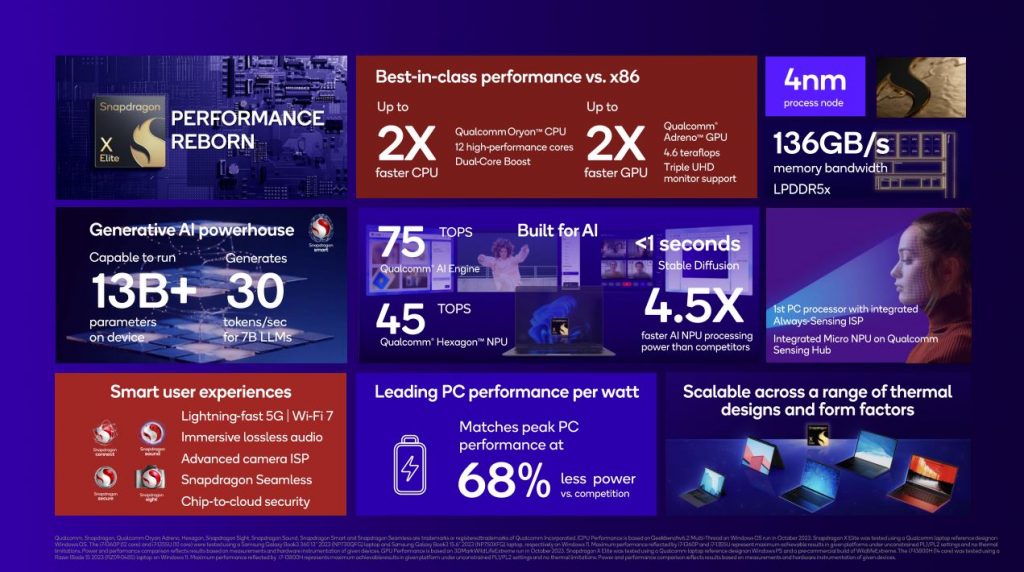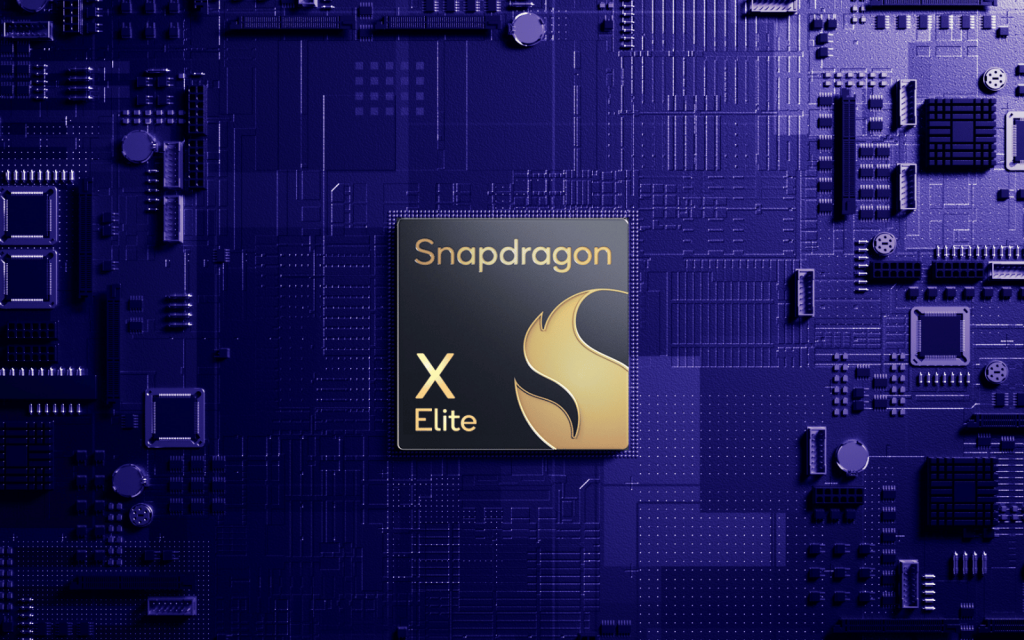The Snapdragon X Elite is a new computing platform that Qualcomm thinks will give AMD, Apple, and Intel a run for their (humongous amounts of) money.
The new platform was announced at Qualcomm’s annual Snapdragon Summit in Hawaii yesterday along with a few other tasty morsels, like the new Snapdragon 8 Gen 3 mobile SoC (system-on-a-chip) and two new wireless audio-focused chips. We’ll get to those in just a bit.
While this does look to be the company’s most powerful computing SoC to date (on paper, anyway), take the claims of it outperforming chips from AMD, Apple, and Intel with a generous helping of salt. However, those claims might hold some truth considering how Qualcomm has positioned the Snapdragon X Elite.
Snapdragon X Elite lends Windows on Arm a hand
 It’s not going to replace your Intel Core i9-13900K CPU in your gaming PC or workstation. This is Qualcomm’s first custom Arm64 CPU and will only interest the people with enough patience to run Windows on Arm, promising improved power efficiency and performance.
It’s not going to replace your Intel Core i9-13900K CPU in your gaming PC or workstation. This is Qualcomm’s first custom Arm64 CPU and will only interest the people with enough patience to run Windows on Arm, promising improved power efficiency and performance.
We’re not going to dive too far into the numbers. If you want to know every specification you can find them here, nerd. But we will highlight a few that stand out.
The chipset is built on a 4nm process and features Qualcomm’s new 12-core Oryon CPU. The chipset’s Adreno GPU boasts DirectX 12 support and a floating-point performance (FP32) of 4.6 TFLOPS (tera floating-point operations per second). To put that into perspective, Apple’s base M2 chip is measured at 3.6 TFLOPS while the range-topping M2 Ultra has 27.2 TFLOPS of FP32 performance.
On the memory front, the Snapdragon X Elite will support up to 64GB of LPDDR5x system memory across eight channels and offers 136GB/s of bandwidth. That’s more than the 100GB/s bandwidth of Apple’s base M2 but doesn’t come close to the M2 Pro, Max, and Ultra.
While the company did include a few charts showing how great the Snapdragon X Elite performs relative to other processors, those charts were more than a bit ambiguous and were very clearly made with the express purpose of showing Qualcomm’s chip in the best light. That’s not surprising and a staple of processor announcements, with AMD and Intel pulling similar manoeuvres on the regular.
If you’re one of those patient folks struggling through the current Windows on Arm experience, you won’t have to struggle for too much longer. Laptops featuring Qualcomm’s newest chipset, from partners Dell, HP, Lenovo, and Microsoft, should be along by mid-2024.



